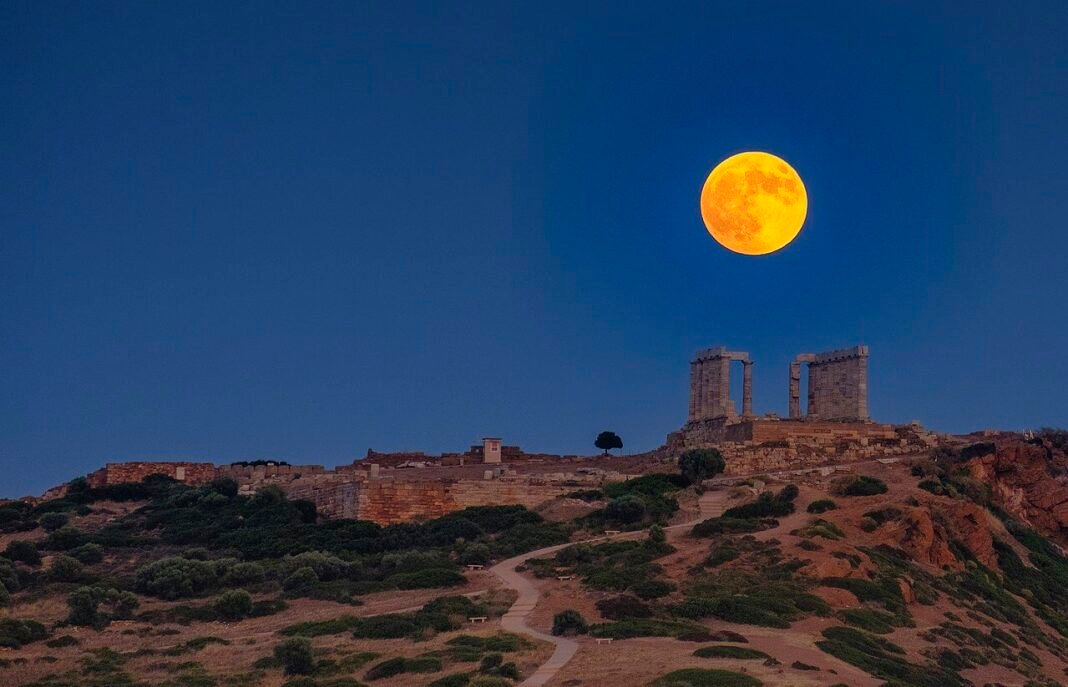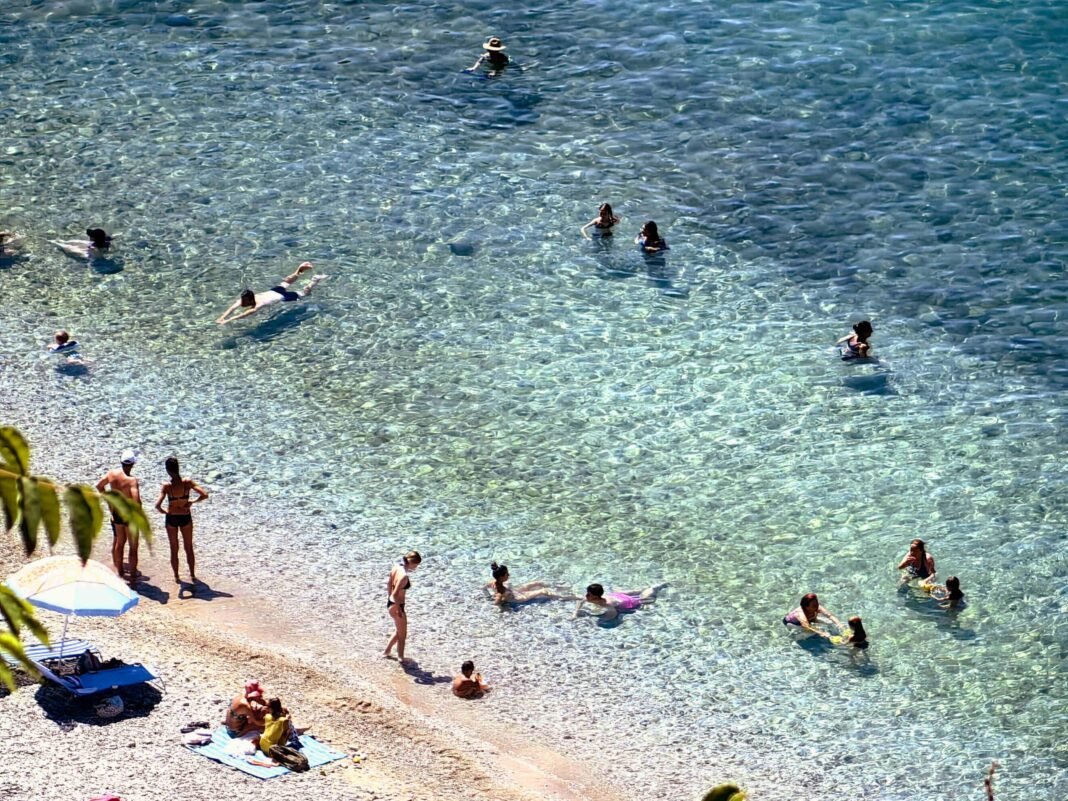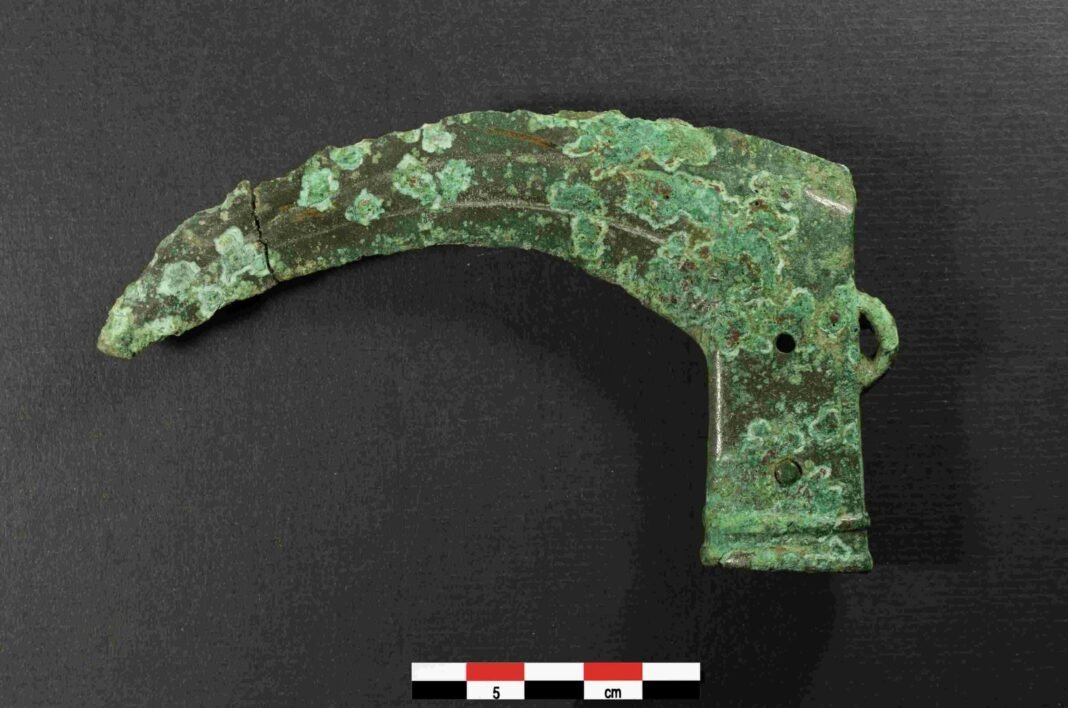
The August full moon in Greece has become a cultural celebration, as the largest moon of the year casts its abundant light on the country’s timeless monuments and sites.
Established by the Greek Ministry of Culture, this marks the 29th year of the celebratory event, during which thousands of people across Greece gather at archaeological sites, monuments, and museums. The August full moon night has become a beloved tradition that no Greek wants to miss.
People gather under the light of the majestic full moon to stargaze, socialize, and enjoy cultural events at archaeological sites and museums, or take guided tours through Greece’s rich history beneath the faint glow of the stars.
Museums and archaeological sites open their doors wide to welcome as many visitors as possible who wish to experience the exhibits and monuments on what is often called the most magical night of the year.
People can also enjoy concerts, plays, and fairy tale narrations for children, all taking place at various archaeological sites, museums, and monuments across Greece, with themes inspired by the country’s cultural treasures.
Top places to be on this majestic night include the Acropolis, the Acropolis Museum next to the hill, and Cape Sounion, where the Temple of Poseidon gazes out over the serene Aegean Sea, illuminated by the moon and dazzling stars.
A joyful kind of overcrowding
The crowds gathering at the Acropolis Hill and Acropolis Museum on the night of the August full moon can be overwhelming. Attendance increases every year, making this night the largest public celebration in Athens.
The lines for Acropolis Hill often stretch for over half a mile, with wait times exceeding an hour. The same applies to the Acropolis Museum. Cell phone cameras flash constantly as everyone attempts to capture an image of the August full moon. Popular musicians and stage performers join the festivities, offering free performances on what many consider the most joyous night of the summer.
The second most popular site in Attica to enjoy the August full moon is the Temple of Poseidon at Sounion. Although there are fewer pedestrians, the line of cars can stretch over a mile. It can take hours to reach the temple area, but the experience is well worth the wait.
This year’s celebration falls on August 9, and events will be held at 115 archaeological sites, museums, and monuments across nearly every region of Greece. From August 8 to 13, these sites will remain open from 8 p.m. until midnight, with free admission.
The ancient history of the August full moon
The only things missing from modern-day August full moon celebrations are the chitons and sandals. In Ancient Greece, the August full moon marked the start of the Olympic Games. Every four years, from 776 BC until 393 AD, the ancient Olympic Games were held in honor of Zeus and staged in Ancient Olympia.
The modern Olympic Games are also held in August, and it is considered a sign of good luck if the opening ceremony coincides with the full moon.
In Ancient Greece, the day began at sunset—not at midnight as is the case today. The August full moon was known as Metageitnion and marked the beginning of a month of festivities and hospitality. The word’s etymology reflects this: meta- (“with”) and geitnion (“neighbor”). People celebrated for days with family, friends, and community.


